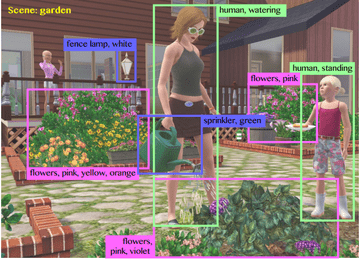
From the 1990s to the present, different cutting techniques have been developed to provide people with amazing virtual encounters in cyberspace. In this context, the term “metaverse,” which combines the words “meta” and “universe,” has been coined to describe a shared virtual environment powered by a variety of developing technologies, the most important being Artificial Intelligence.
The relevance of massive data processing in enhancing interactive experience and enabling humanlike intelligence in virtual agents has been demonstrated by AI. To develop scalable and realistic virtual worlds, the metaverse will combine augmented and virtual reality (AR/VR) with artificial intelligence and blockchain. AI is a critical technology that works behind the scenes to create a beautiful and creative environment, providing consumers with a seamless virtual-reality experience. AI may help with content production as well. For example, certain AI modules, such as NVIDIA’s GANverse3D, allow developers and producers to take photographs of items and then create virtual duplicates. Several DL-based approaches for rendering 3D objects (including human body parts) have been presented, with amazing accuracy and realtime processing accelerated by both software and hardware.
This blog looks at state-of-the-art AI-based solutions in many technological areas such as natural language processing, machine vision, and blockchain, all of which have metaverse potential. As a result, users’ experiences in the metaverse are considerably enhanced, with virtually no distinction between the virtual and actual worlds.
NLP
In the metaverse, NLP is critical for intelligent virtual assistants. AI chatbots are intended to help users in virtual worlds such as the metaverse. Language modelling, which is beneficial for machine translation and text recommendation, is one of the most significant jobs in NLP. It predicts words or simple linguistic units by capturing syntactic and semantic relations of preceding words and units.
In most VR games, navigation is accomplished using handheld controllers, gestures, or eye tracking. To browse immersive areas like the metaverse, the user can use VR controllers to click a few buttons, move the joystick, scroll up/down, and so on. This experience now includes voice-based controls, thanks to NLP. We could say that NLP in the metaverse (or any other virtual environment) would provide VR users with a new way to provide inputs. For instance, when a player speaks into their microphone in a virtual reality game, a doorway opens. Because the Metaverse strives for a high level of realism in its recreations of real-world experiences, voice commands will be crucial.
DL has been used to overcome the learning shortcomings of traditional ML algorithms and effectively cope with a variety of difficult NLP jobs for the metaverse. Multiple sentence-based tasks, such as sentiment prediction and question type classification, are handled by CNNs with simple and advanced architectures. Furthermore, feature extraction of characteristics may be required for sentiment analysis and recognition tasks, which has the ability to boost the reliability and flexibility of virtual assistant units in the metaverse.
